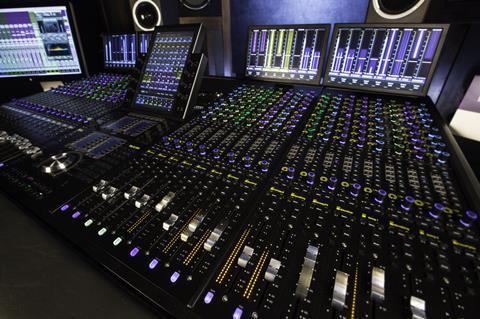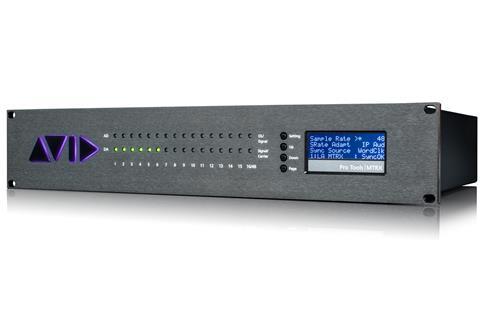The call to deliver content in more formats, the continued rise of immersive and object-based audio, and the prospect of further loudness recommendations are among the issues making fresh demands on the tools used audio post.

The massive impact that 4K/UHD and HDR have had – and continue to have – on the development of production workflows has been the subject of significant debate over the past 2-3 years. There has been less attention devoted to the evolution of audio post, although in its own way this has been comparably seismic.
As Neville Hooper of NEP remarks, “the major challenge [involved in facility developments] resides in future-proofing any decisions you make to accommodate emerging technologies.” In audio post, this has lately translated to a perpetual need to deliver high quality stereo and 5.1 content, whilst also adding capacity for immersive audio as well as additional file formats and deliverables. Looking ahead slightly, the prospect of more formal loudness regulations for OTT and streaming content is also bound to have an impact on day-to-day operations.
Hence, helping audio post teams satisfy all these new requirements without adding unduly to workload or production complexity is an overriding priority for vendors everywhere.
- Watch on-demand webinar: Crafting quality: Skills for successful UHD and HDR production
Demand for Dolby Atmos
There are no prizes for guessing, however, that it is immersive audio, object-based audio and other technologies now routinely bracketed under the label Next Generation Audio (NGA) that were cited most frequently during preparation of this article. One technology, in particular, appears to be leading the charge.
Adam Lebowski, product marketing manager of audio solutions at Avid, remarks that “the biggest shift in audio post workflows is due to the growth of Dolby Atmos. Movies are now commonly mixed for immersive playback, and popular streaming services like Netflix and Amazon Prime request 3D/object-based surround sound as their preferred deliverable. Post facilities and professionals are challenged with staying ahead of the curve. Session sizes are larger, more I/O is needed, and many facilities are needing to equip rooms that are not purpose-built for immersive audio, where acoustics and free space are a challenge.”
- Read more: Amplifying the sound of silence
The ACA Vote – the annual consultation of the Avid Community Association that first took place in 2016 – has proved influential in determining the direction of R&D. “What we have learnt from the ACA,” notes Lebowski, “is that audio professionals working in post-production want solutions that are deeply integrated so they can easily work with higher track counts, meet deadlines and run their studios like clockwork.”
Hence the entire Avid audio post solution – from Pro Tools | Ultimate to Pro Tools | HDX, HD I/O and Pro Tools | MTRX, to the EUCON-enabled control surfaces – has been tightly integrated. In terms of NGA specifically, “early on Avid worked closely with Dolby to develop specific integrations in Pro Tools | Ultimate for object-based mixing. [Coming right up to date] the increased voice count in Pro Tools | Ultimate and the Pro Tools | MTRX DigiLink I/O Card are the latest developments in an ongoing theme of deeper integrations for immersive mixing.”

Among recent post credits, Lebowski says that several studios and post houses in Europe are benefiting from either Pro Tools | MTRX and Pro Tools | S6 control surfaces or both, including French facilities Nice Fellow, Chinkel, JLA Production and Cinephase, Orange Sound Studios in Germany, and Oslo Studio Basel in Switzerland.
Loudness and automation
Two other distinct strands to the current audio post narrative are highlighted by Jozsef Pinter, who is product specialist at Interra Systems. ITU BS.1770 and the loudness recommendations that have followed constitute a major shift; in time, “different distribution platforms also started using these algorithms and developed their own target values suitable [for the consumption of] all sorts of content on various devices or environments.
With the need to supply more content to more platforms, and in more formats, the automation of repetitive tasks in the audio domain is also exerting an influence. “And through machine-learning and artificial intelligence, barriers are pushed even further,” adds Pinter. “These trends allow humans to concentrate on subjective and artistic areas, while tedious, repetitive tasks can be performed by machines.”
For Interra Systems both strands have come together in the form of the BATON Content Corrector, which is part of the company’s BATON file-based quality control solution. BATON Content Corrector offers automated loudness correction as well as channel-swapping, Dolby E guard band correction, metadata correction and certain video corrections.
Pinter says the tool was developed in response to specific requests for automated loudness correction, “and several years after the product launch we are happy to share that large TV networks and broadcasters have successfully adopted our products within their loudness workflows and are using them on a daily basis to automatically process vast amounts of content.”
The prospect of more formal loudness stipulations for OTT and streaming content – for instance, the EBU is now at work on a related supplement to its widely-adopted R.128 loudness recommendation – mean that this will continue to be a live issue in the future.
Processes and productivity
Simplifying or automating tasks has also been a preoccupation for Blackmagic Design, whose presence in professional audio underwent a decisive step change when it acquired Fairlight in September 2016. The Fairlight audio brand had long traversed multiple markets including film and television post, live broadcast production, and immersive audio mixing.

Stuart Ashton, director of Blackmagic Design EMEA, confirms that Fairlight technologies have been incorporated into a variety of products. One of the most prominent examples is the latest (v16) version of editing solution DaVinci Resolve, currently in public beta, which incorporates “virtually the entire feature set” from the original Fairlight post production system. That includes Fairlight’s original CC-2 audio processing hardware as well as the SX-36 I/O systems.
- Read more: From 4K to 8K capture
“With DaVinci Resolve 16 there has been a big emphasis on making every feature and function in the creative process more productive,” says Ashton. “To achieve that we have applied the same methodology and thinking that we do in manufacturing to introduce refinements to Resolve’s GUI, eliminating waste and improving usability.”
It’s possible that the current multitude of mix formats and technologies is holding back adoption of NGA in some quarters. For now, the only logical response for most vendors is to support as many formats as possible. In the case of DaVinci Resolve 16, there is full support for immersive formats including Dolby Atmos, Auro 3D and SMPTE-2098.
The latest version of DaVinci also nods heavily in the direction of audio engineers needing to produce multiple mixes of the same content – but, presumably, without much in the way of additional time to do so. Hence what Ashton describes as the development of a ‘mix-once-deliver-many’ concept in Resolve, “which means an engineer can deliver that same audio mix in any of the immersive formats. We can do that because Resolve supports both channel and object-based 3D mixing.”
Lasting loyalty
Although some mix engineers remain true to tried-and-trusted outboard gear for certain effects, the highly integrated nature of most audio post solutions means that many are – to an overwhelming degree – loyal to just one or two brands. Hence for vendors the stakes are always extremely high – but if they can remain responsive to changing needs there is an excellent chance, they can retain customers for the entirety of their working lives.
As Ashton observes, “customers remain loyal if manufacturers deliver products that are in line with their expectations. We realise that we have to listen to our customers and deliver them the highest quality solutions, while also offering a gateway into new and exciting tools that may allow them to expand their creativity.”
























No comments yet